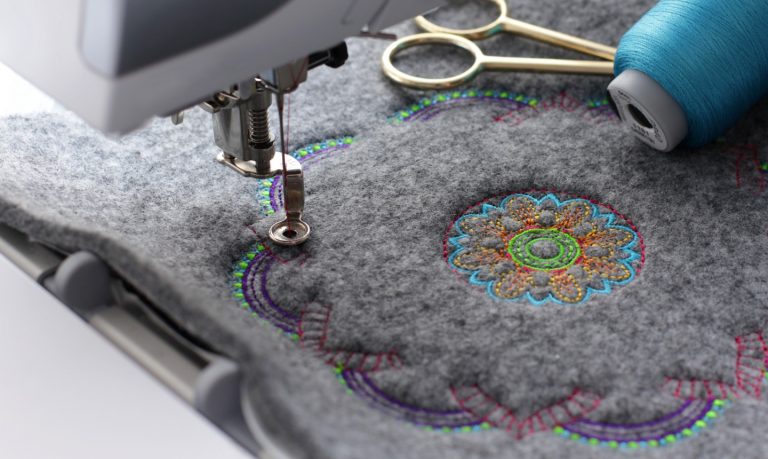Finest Digitizing for Embroidery: Boost Your Jobs
Grasping the Embroidery Digitizing Refine: Your Ultimate Overview
Embroidery digitizing is a meticulous craft that requires accuracy and know-how to translate elaborate designs right into electronic formats for machine needlework. As craftsmens get started on this trip to understand the needlework digitizing process, an extensive understanding of the basics establishes the structure for quality.

Recognizing Embroidery Digitizing Essentials
Needlework digitizing basics form the structure whereupon detailed designs are equated right into machine-readable styles for accurate stitching. This preliminary step in the needlework digitizing process is vital for ensuring that the last stitched product is a devoted representation of the original design. Recognizing embroidery digitizing basics includes realizing essential principles such as stitch types, stitch instructions, density, padding, and draw settlement.
Sew types play an important role in determining the visual and textural result of the embroidered design. By picking the ideal stitch type, whether it be satin, fill, or running stitch, digitizers can accomplish the wanted effect and boost the overall high quality of the needlework. Furthermore, stitch direction influences the circulation and dimension of the design, while density figures out the spacing and coverage of the stitches.
Moreover, padding stitching offers security to the layout by protecting the textile and stopping distortion during the needlework procedure. Pull compensation is an additional crucial consideration to neutralize the all-natural propensity of fabric to agreement when stitched. Mastering these embroidery digitizing fundamentals is fundamental for creating professional-quality embroidered products.
Picking the Right Digitizing Software Program
Choosing the proper digitizing software application is an important choice that dramatically influences the efficiency and top quality of the needlework digitizing process. Digitizing for Embroidery. When picking the appropriate digitizing software program, it is necessary to consider variables such as the intricacy of layouts you prepare to develop, the user-friendliness of the software, the degree of customer assistance offered, and the compatibility with your embroidery maker
There are various digitizing software alternatives offered in the marketplace, varying from basic programs for novices to sophisticated software program for professional digitizers. Some prominent choices consist of Wilcom EmbroideryStudio, Hatch Embroidery Software, and PulseID. These software supply a variety of devices and attributes to help you produce elaborate designs with convenience.
Prior to basics making a decision, it is advisable to explore the different software program alternatives through totally free trials or demonstrations to figure out which one best matches your requirements. Furthermore, checking out reviews and seeking recommendations from experienced digitizers can offer useful understandings right into the staminas and weak points of each software program plan (Digitizing for Embroidery). By meticulously examining your needs and contrasting the functions of different digitizing software program, you can make an educated option that enhances your embroidery digitizing workflow
Digitizing Tools and Methods

Optimizing Style Settings for Needlework
Grasping the ins and outs of style settings is fundamental in attaining you can look here ideal results in the embroidery digitizing procedure, structure upon the foundation laid by comprehending digitizing tools and strategies. When maximizing design setups for needlework, it is necessary to consider factors such as stitch kind, thickness, padding, pull settlement, and registration. Enrollment setups line up different aspects of the layout properly, maintaining total style integrity.

Troubleshooting Common Digitizing Issues
When experiencing common digitizing concerns during the needlework procedure, it is crucial to recognize the source and carry out effective options quickly. One common issue is stitch thickness concerns, where stitches might be also dense, triggering the textile to tighten, or as well thin, resulting in voids in the design. Readjusting the stitch density settings in the digitizing software application can help solve this problem.
An additional constant difficulty is thread breaks throughout the embroidery procedure. This can happen as a result of numerous factors such as incorrect stress setups, boring needles, or using low-grade thread. Making certain correct upkeep of the embroidery equipment, consisting of routine needle adjustments and tension changes, can minimize the event of string breaks.
Furthermore, style enrollment mistakes can lead to misaligned elements within the embroidery style. Checking the style alignment in the digitizing software application and making essential adjustments prior to stitching can aid in avoiding this concern. By resolving these typical digitizing concerns immediately and successfully, you can ensure a smoother needlework procedure and top quality ended up products.
Verdict
Finally, grasping the needlework digitizing procedure needs a solid understanding of the fundamentals, the appropriate option of software application, and understanding of tools and techniques. Enhancing style setups and fixing click common digitizing issues are vital steps in guaranteeing high-quality embroidery outcomes. By complying with these actions faithfully, one can achieve precision and performance in the digitizing procedure.